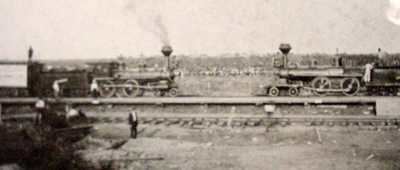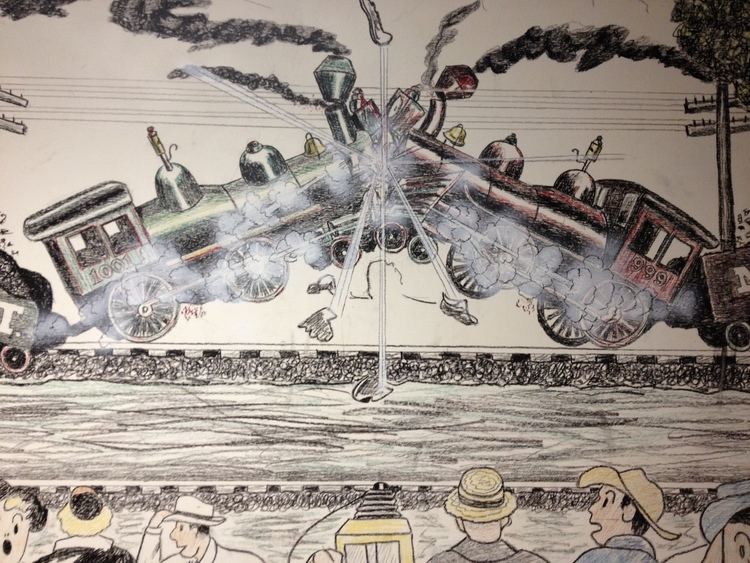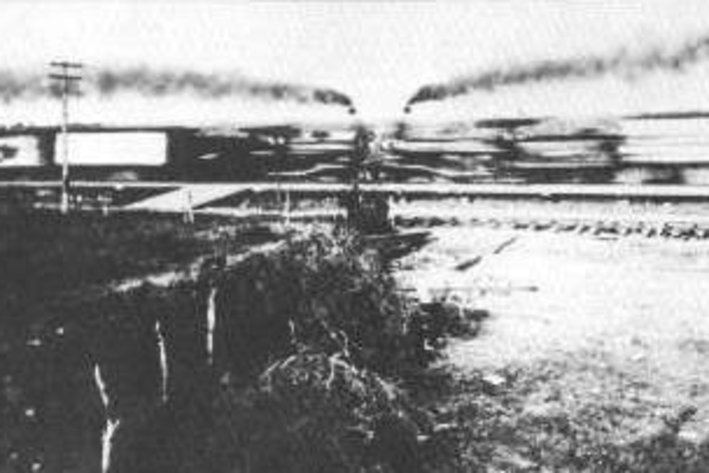 | ||
Crush, Texas, was a temporary "city" established as a one-day publicity stunt in 1896. William George Crush, general passenger agent of the Missouri-Kansas-Texas Railroad (popularly known as the Katy), conceived the idea to demonstrate a train wreck as a spectacle. No admission was charged, and train fares to the crash site were at the reduced rate of US$2 from any location in Texas. As a result, about 40,000 people showed up on September 15, 1896, making the new town of Crush, Texas, temporarily the second-largest city in the state. Unexpectedly, the impact caused both engine boilers to explode, resulting in several fatalities and numerous injuries among the spectators.
Contents
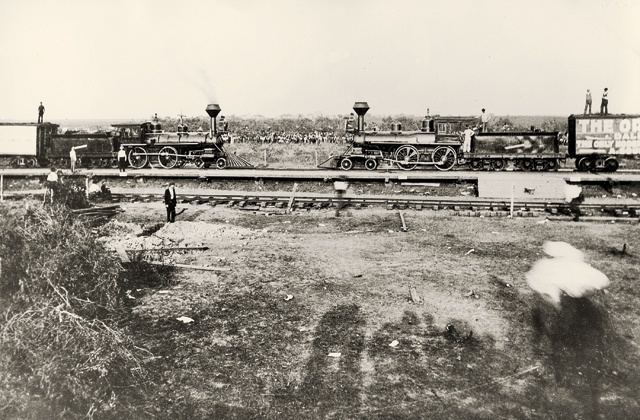
Preparations

Two wells were drilled at the site 3 miles (4.8 km) south of the town of West in McLennan County. Circus tents from Ringling Brothers were erected as well as a grandstand. The train engines were painted bright green (engine #999) and bright red (engine #1001), both 4-4-0 American locomotives (two pilot axles, two drive axles, and nothing under the firebox). A special track was built alongside the Katy track so that there was no chance a runaway train could get onto the main line. Crush, Texas was named after Mr. Crush who worked for the railroad and invented the Crash at Crush event. The trains toured the state for months in advance, advertising the event.
Crash

The event had to be delayed for an hour because the crowd resisted being pressed back by the police to what was supposedly a safe distance. About 5:00 pm the two trains, pulling cars loaded with railroad ties, were rolled to the opposite ends of a 4-mile (6.4 km) track. The engineers and crew opened the steam to a prearranged setting, rode for exactly 4 turns of the drive wheels, and jumped from the trains. Each train reached a speed of about 45 miles per hour (72 km/h) by the time they met near the anticipated spot.
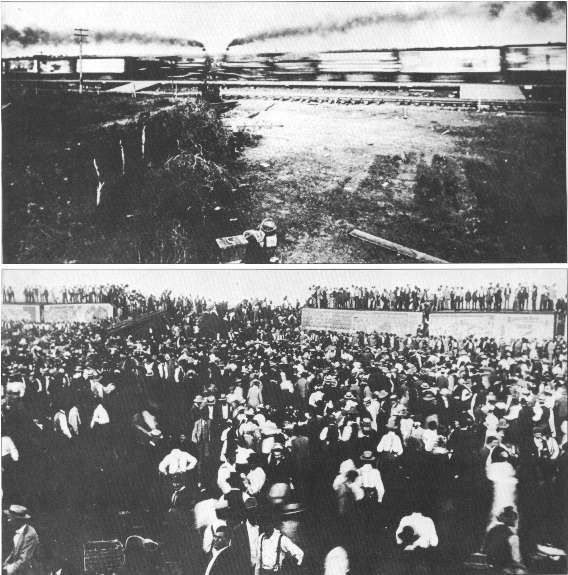
When the trains collided, there was a large explosion. Debris—some pieces as large as half a drive-wheel—was blown hundreds of feet into the air. Some of the debris came down among the spectators, killing two or three and injuring many more. Event photographer Jarvis "Joe" Deane lost one eye to a flying bolt. A contemporary newspaper speculated that the explosion occurred shortly after the initial impact (see right).
Aftermath
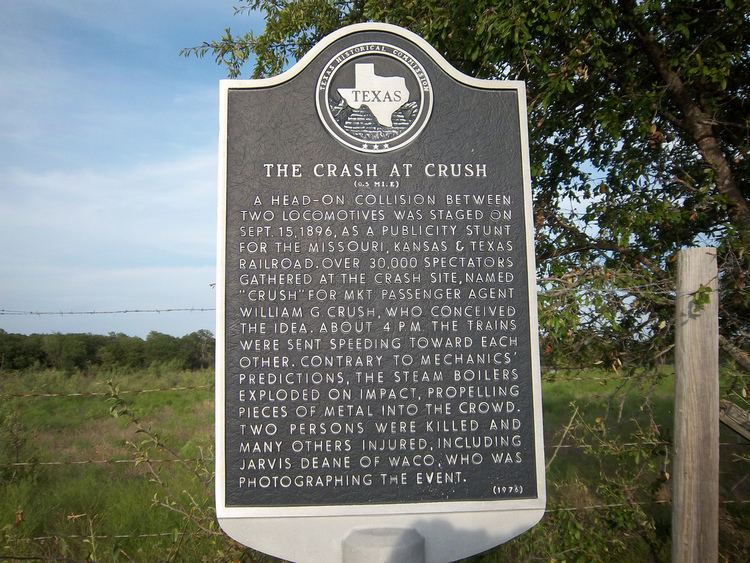
Crush was immediately fired from the Katy railroad. In light of a lack of negative publicity, however, he was rehired the next day. The wreck was featured in an episode of the History Channel series Wild West Tech.
Scott Joplin's "Great Crush Collision March"
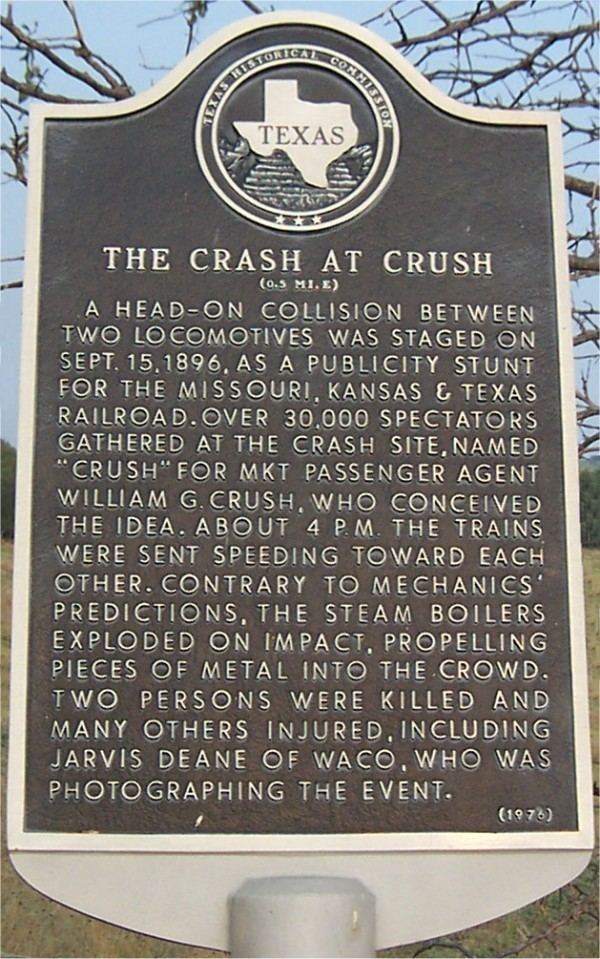
Ragtime composer Scott Joplin, who was performing in the region at the time and who possibly witnessed the event, wrote a piano piece called "Great Crush Collision March" to commemorate the crash; the composition was dedicated to the Missouri-Kansas-Texas Railway. It was copyrighted on October 15, 1896, a short month after the event. The piece was notable because it included instructions in the score for how to replicate the sounds of the trains' collision through playing techniques, specific notes, and the use of dynamics.

